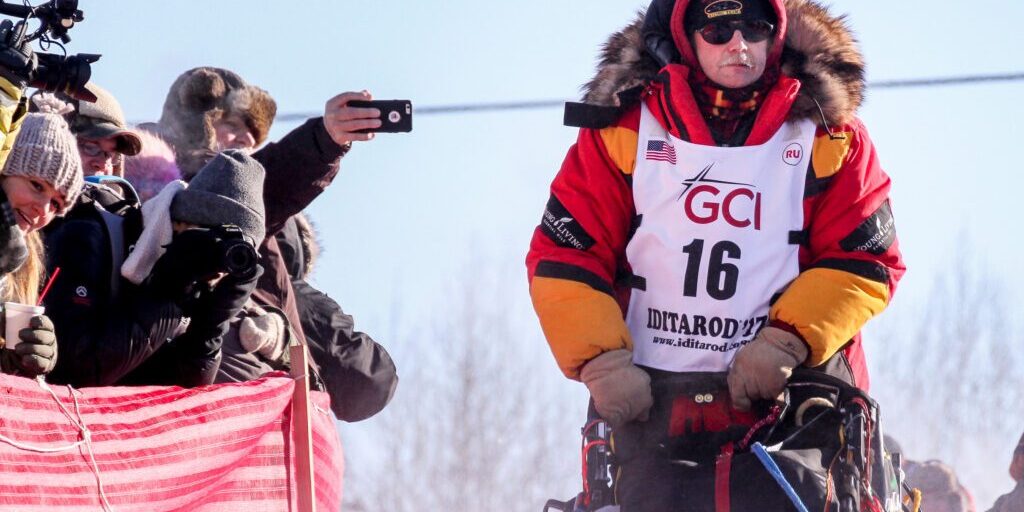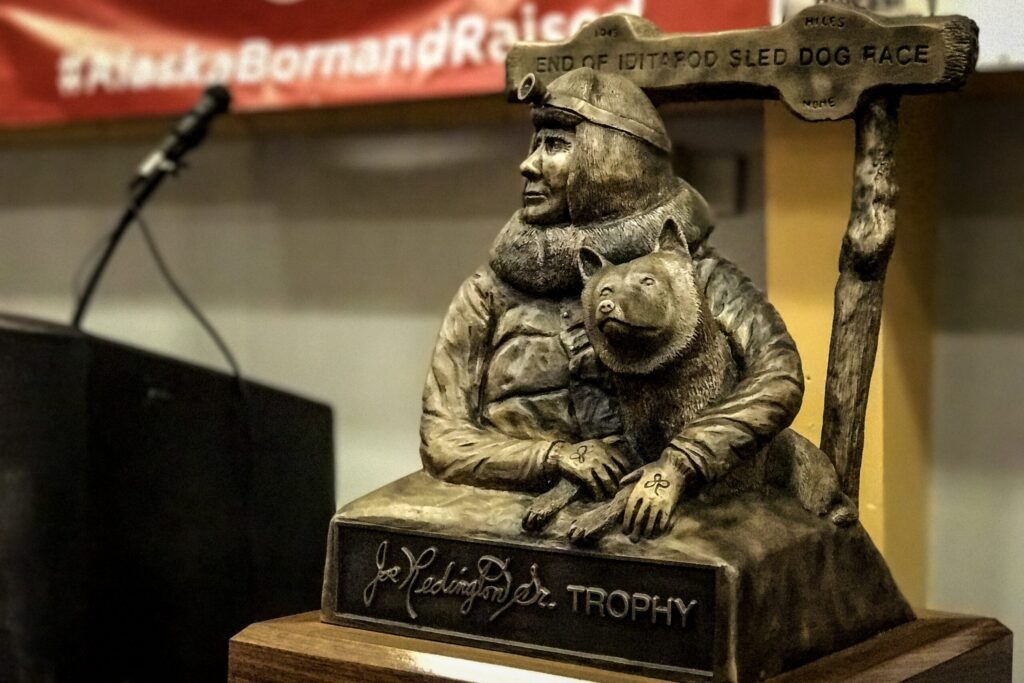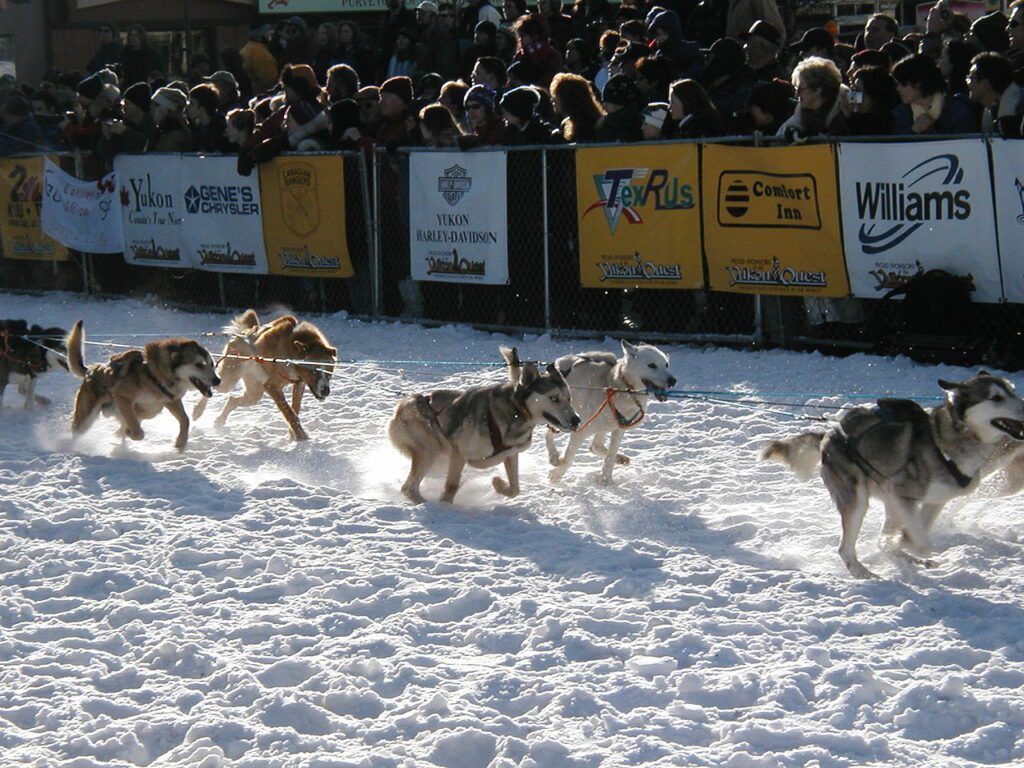As mushers speed toward Nome, a controversial new Iditarod rule is in effect for the first time. After a vote by the Board of Directors last fall, mushers are now allowed to carry two-way communication devices, like cell and satellite phones. But as Alaska Public Media’s Zachariah Hughes is finding out, many competitors both young and old think the presence of technology goes against the spirit of the race.
Speaking at the Ceremonial Start, Kasilof musher Monica Zappa has a reputation for being outspoken. And she doesn’t mince words about why she’s “boycotting” the two-way communication rule.
“Because it’s pointless. My cellphone would be dead in two seconds in the cold, anyway. There’s no service on the trail. And it’s a really lame rule.”
The change is to language in rule number 35, governing electronic devices. Communicators can be brought along and used, though not for any media purposes.
Paul Gebhardt sits on the Iditarod’s board of directors and says he won’t be bringing any kind of phone.
“I don’t like it, I got nobody I really want to talk to when I’m out there, just my dogs and me. And that’s what I think the spirit of the race is about. And I voted, personally, against the two-way communication device, and most of the mushers agree with me.”
A lot of racers say the technology is not only cumbersome, but could prove a distraction. Norwegian Joar Ulsom thinks it also opens up the possibility of getting mentally derailed at a time when psychological fortitude is crucial.
“People can send you text messages that you receive and you have no control (of) what they’re saying to you. And they could say a thing that’s gonna benefit me, or a thing that’s gonna mess up my day.”
Not everyone is against the change, though. And some like it for the very reason that others are dismissive. Wade Marrs is bringing both a satellite and cell phone, and says while communication can’t be a part of his strategy, it’ll be a boost to check in with his girlfriend at tough points in the race.
“I do my best thinking on my own, and not with any pressure. So definitely not looking to find any advice or anything like that from it. But be able to call Sophie and say hi and tell her I love her — that’ll be nice.”
While racers still aren’t allowed to accept outside help, it’s unclear how that prohibition can be monitored and enforced when it comes to calls or communication. There’s lingering ambiguity about what is and isn’t allowed under the rule change, even among some of the race’s most experienced veterans. Past champion Mitch Seavey is bringing a cell phone — somewhat reluctantly. And he says for those mushers gunning for a first place finish, there’s no use not seizing every available tool to gain an edge.
“I didn’t make the rule, I wish the rule wasn’t there, but if they’re gonna have that device allowed – and it isn’t just cell phones it’s any two-way communication, so remember it’s not limited by cell coverage – then I would be foolish to not participate in that. Although, honestly, we’re at the starting line and I’m not quite sure yet what we’re allowed to use them for and what we’re not.”
The change was spurred by safety concerns after last year’s race, when an intoxicated snowmachiner attacked two mushers on a remote stretch of trail. Defenders of the rule say that with the technology available, there’s no longer a good reason not to have an extra security option available for those who want it. One of the racers attacked was Aliy Zirkle, who, with the new rule in place, would be able to call race officials for help if something similar every happened. But few mushers cite safety in their decision on whether or not to bring a device. Zirkle’s partner, Allen Moore, won’t be carrying one. But he is bringing another safety precaution.
“I got a flare gun, I don’t know if that counts. To scare off moose or bad people or whatever.”







